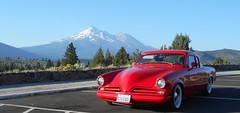Starting to put my engine back together. I verified all my oil passages in the block, crank and rods were open this morning. I washed the block out, dried it and appiled a very light coat of oil to all the machined surfaces to make sure I didn't get any flash rust.
Tomorrrow I plan to set the crank and verify the clearance on the mains using plastigauge. Then I will check the end play and hope I have the correct shim. Assuming I have the correct shim I will install the rear seal, install the flywheel bolts in the crank flange, lube everything up, install the crank and torque it down.
Any tips to save me some pain and agony?
Tomorrrow I plan to set the crank and verify the clearance on the mains using plastigauge. Then I will check the end play and hope I have the correct shim. Assuming I have the correct shim I will install the rear seal, install the flywheel bolts in the crank flange, lube everything up, install the crank and torque it down.
Any tips to save me some pain and agony?




Comment